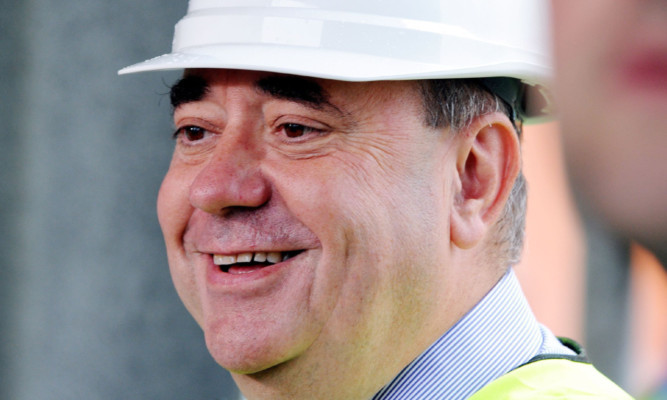Alex Salmond has staunchly defended an economic policy heavily dependent on the price of oil.
“It’s Scotland’s oil” has been the rallying cry of the SNP for generations and formed the basis of the Yes campaign’s economic case in the referendum campaign.
As the oil price went into freefall in recent weeks, the SNP’s oil-based economic case has come under severe pressure.
But Mr Salmond defended his proposed economic policy for an independent Scotland even although opponents claimed it disintegrated as oil prices hit the skids.
He warned that “oil prices go up and down” and accused his detractors of not taking the long view while attacking them for raking up a referendum argument “from three months ago”.
He claimed oil was “too important to leave to Westminster”.
On Thursday, First Minister Nicola Sturgeon was appealing to the UK Government for huge support for the oil industry to protect it in the face of the downturn.
Oil revenue based on the high returns of the last few years underpinned an independent Scotland’s future economic fortunes.
With a new crisis hitting the offshore industry and the UK economy as oil prices collapse, Mr Salmond’s political opponents have moved in for the kill.
They claim that the Scottish Government’s oil revenue forecasts for the first three years of independence would now be in the red by £15.5 billion, with potentially disastrous consequences for the country.
The former First Minister was prepared for our questions and combative in response.
He could barely contain his exasperation as he said: “People have so little patience for politicians who, when people are at risk of losing their jobs, all they can think of is making an argument about a referendum that happened three months ago.
“Anybody who knows anything about oil prices knows they go up and down.
“I was around during the oil price collapse of 1986 when oil didn’t go to 50 dollars a barrel, it went to 10 dollars. The oil price will go up again, everybody knows that.
“The task is not to debate what the oil price will be in a year, six years, 20 years or over the next 40 years it’ll go up and it’ll go down. But the idea that it won’t be worth a substantial amount of money is ludicrous.”
Mr Salmond argued that the issue was how to protect jobs, how you protect livelihoods. He pointed to the success of Norway’s oil fund.
“The Norwegian economy is not on its knees. Why? They’ve got a £500 billion oil fund that they built up over the last 40 years, which is a lesson for where Scotland should be.
“In the Autumn Statement the Chancellor blithely announced an oil fund for the north-east of England before a single barrel of oil is produced, but we are 40 billion barrels in.”
He claimed the unionist parties were getting a negative reception for their “almost gleeful” celebration that the oil price is low.
On the other hand, when oil prices were high the UK Government moved “like lightning” to increase taxation in the North Sea, he said. When oil prices were low, they proceeded at a “snail’s pace”.
